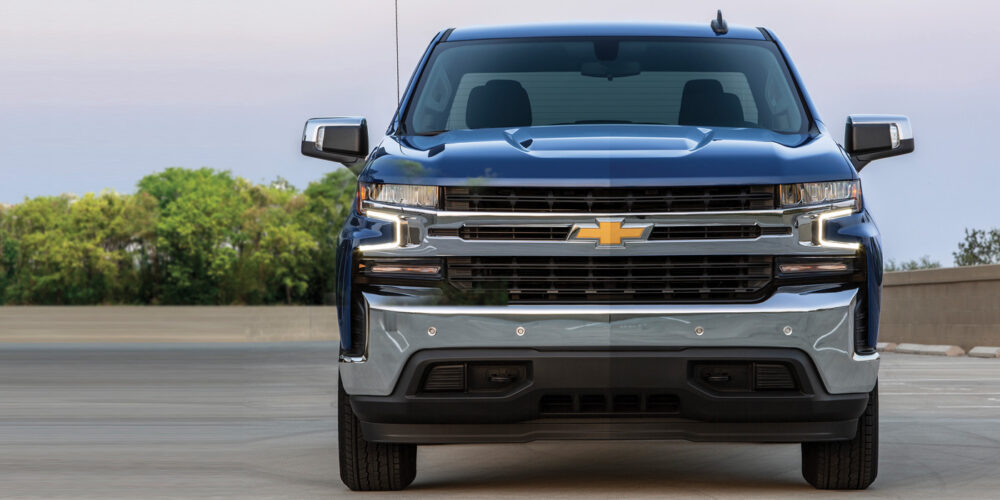For the first few years after any new model or platform is introduced, dealerships see the majority of service and parts requests for these vehicles under warranty. Aside from accessories and non-warranty maintenance items such as filters, wipers and bulbs, the aftermarket demand for new-model components can be limited.
Once these vehicles “age out” of their warranty periods, aftermarket personnel begin to field more and more requests for aftermarket replacement parts. The latest Silverado and Sierra platform is now well into its fourth year of production, and due to its popularity and the number of vehicles in operation, the aftermarket demand for replacement parts is increasing.
General Motors introduced its latest full-size truck and SUV platform in late 2018, for the 2019 model year. Known as the “GMT1,” it replaces the previous “GMK2” platform introduced for MY 2014. The Silverado and Sierra 1500 were the first vehicles to use the new platform, but true to history, GM also carried over the previous model, creating yet another confusing single-year overlap in body styles.
In 2007, GM used the “Classic” designation to identify the “old-body” 1500s that were built on the previous GMT800 platform, while the “new-for-2007” Silverados and Sierras were built on the GMT900 platform. Fifteen years on, it continues to be a sticking point when cataloging parts for these trucks.
For 2019, the “classic” GMK2 carryovers are known as the Silverado LD (“light-duty”) or “Legacy,” and the Sierra “Limited.” Fortunately, GM moved final assembly of these carryover trucks to its Oshawa plant in Ontario. These Canadian-assembled GMK2 platform trucks are unique in being the only MY 2019 Silverado/Sierra 1500s featuring a VIN beginning with “2,” making it the simplest way to identify these trucks for cataloging purposes.
Aside from the visual styling cues and VIN differences, the GMT1 platform also is the first Silverado to feature an electronic parking brake, with a push-button rather than a pedal, and the service-brake system now features pad-wear sensors. These two new features will require additional service steps, including putting the e-brake into service mode before pad replacement and resetting pad-wear-life monitors afterward.
The 2500 HD and 3500 HD made the transition to the GMT1 platform for MY 2020, while the Chevrolet Tahoe and Suburban, Cadillac Escalade, GMC Yukon and Yukon XL all switched over to the GMT1 platform for the 2021 model year.
GM also returned to the medium-duty category in 2019, after a 10-year absence (the Kodiak and TopKick were discontinued in 2009). The Silverado 4500 HD, 5500 HD and 6500 HD are part of a joint venture between GM and Navistar International, with these trucks being built at a Navistar assembly plant in Ohio. The first three digits of the Silverado HD VIN (1HA) identify these trucks as “incomplete Chevrolets manufactured in the US by Navistar,” and there are no equivalent GMC models.
Beginning in 2018, GM began making significant changes to the service parts ID (SPID) decal information. The familiar sticker in the glovebox, listing all of the relevant RPO codes we use to decipher options, has been replaced by a QR code! This QR code is located on the certification label, found on the driver’s side B-pillar. Most QR apps for Android and iPhone are capable of translating the code, but the “search results” are now reduced to a maximum of 48 individual RPO codes, rather than a full accounting for every installed option.
Major RPOs for suspension, brake, engine and transmission seem to be present in most of the QR-decoded examples I’ve seen, but coverage is nowhere near as comprehensive as we once enjoyed. The paint code is plainly written at the left lower corner of the QR-code square, so one of the most common uses of the SPID decal still is readily available without downloading information to your phone. This was implemented as a running change beginning in 2018, so some vehicle certification labels featured QR codes before others. If no QR code is present on the door tag, look for a traditional SPID in the glovebox, trunk or other location.












